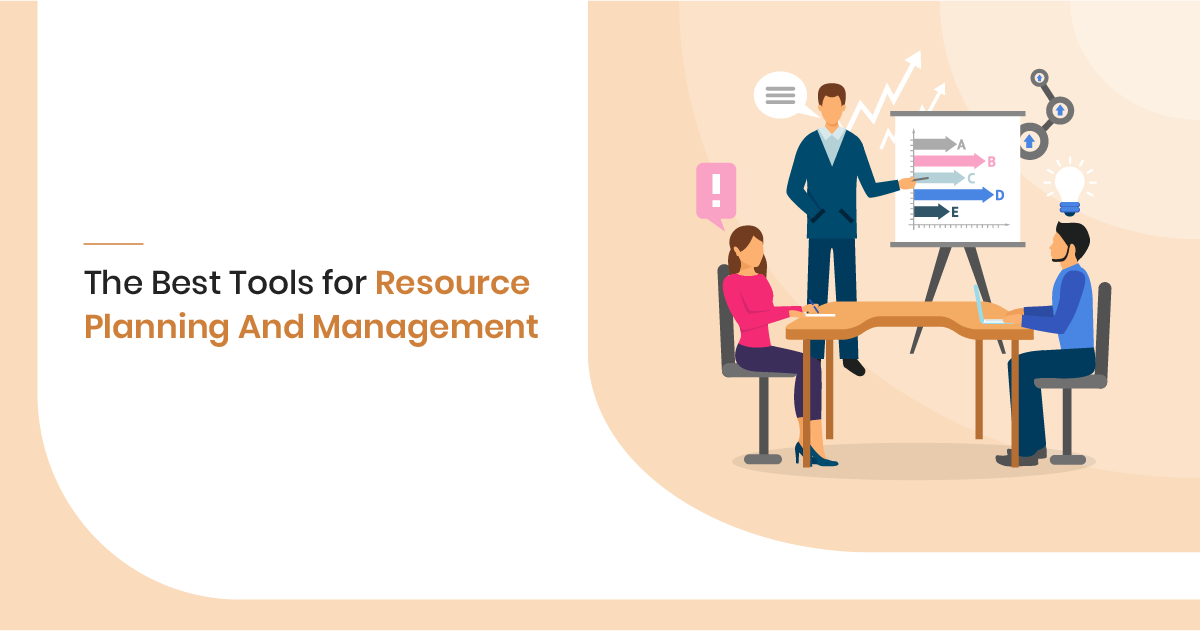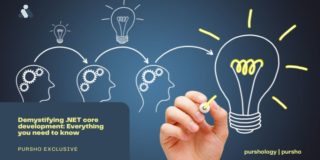“A good ERP is more than just good software. It involves an institutional commitment to connecting people, processes, and resources. This will be achieved by deploying sound data practice as part of a broader University-wide Web strategy.”
– JAMES YOUNG

Looking for ERP Software? Check out SoftwareSuggest’s list of the best erp software solutions.
Management of the human and other resources of the organization in the most effective manner ensures the business’s longevity. So, for this purpose, often, medium and large-scale enterprises traverse the route of enterprise resource planning and management. The ERP management software is the best investment a company can make to improve the productivity of all the related resources. But, the ERP software implementation is based on multiple factors like ERP implementation modules, customization, data conversion, and available project management resources. So, let’s take a closer look at what is this ERP software implementation is all about.
What Is Resource Planning?
“Even the best team, without a sound plan, can’t score.”
-Woody Hayes
The above quote by Woody Hayes very well signifies the need for efficient management of the human and non-human resources within an organization for the project’s success. Resources being the most pricey investment of any firm should be utilized to the best of its potential.
Resource planning is therefore termed as the practice of managing the resources of the organization at the right time and place to elevate the level of project productivity, performance, and profitability. In other words, resource planning can also be termed as the potential of resource managers to timely forecast the project requirements and strategize a plan, to allocate and utilize the resources for competent effectiveness.
What Are The Key Components Of Resource Planning In A Large-Scale Enterprise?
In a large-scale enterprise, it’s not an easy task for a resource manager or a project manager to centralize and connect to multiple business projects. Resource planning requires well-structured software support to actualize the vision of the project. So, to make the load easier, Software Suggest has worked out the key components of enterprise resource planning and management. These six major components of resource planning can also be a part of the ERP software modules that might require a certain level of customization to streamline the daily project activities of any organization. Let’s start;
1. Human resources
“Nothing we do is more important than hiring and developing people. At the end of the day, you bet on people, not on strategies.”
-Lawrence Bossidy, Former CEO of General Electric
The above words prioritize the significance of structured channelization of the human resource of the organization for any given project. Hiring the right person for the right job, after proper evaluation of his potential can elevate the productivity and profitability of the other resources involved in the project.
2. Business intelligence
In the 21st century, business intelligence (BI) has become one of the primary components of resource planning and management for any large-scale business. It’s needed to empower the operations and fasten the processing time of the project.
3. Supply chain management
Effective SCM or supply chain management is needed for the effectiveness of the distribution and manufacturing processes on a timely basis. It also takes care of the real-time balance between the demand and supply of the product. It is all about getting the right product, at the right place, in the right quantity at the right cost.
4. Customer relationship management
“Every contact we have with a customer influences whether or not they’ll come back. We have to be great every time or we’ll lose them.”
-Kevin Stritz
CRM is all about being insightful about improving the sales and marketing of the firm. Effective customer relationship management assists in reducing the backlogs in the sales process and minimizing the level of customer grievances.
5. Inventory management
The inventory management component is about managing the order on time and also managing the warehouse stock. Inventory management works in collaboration with supply chain management to ensure the effectiveness of customer relationship management.
6. Financial management
“ Beware of little expenses. A small leak will sink a great ship.”
-Benjamin Franklin
When in business, you need money to hire humans, buy raw material, buy machinery, or manage logistics. Being a part of a large-scale enterprise the management of this flow of money becomes a highly complicated task. Even the smallest of the flaw can drown the business to big losses. A properly managed financial structure takes care of the accounts receivable and payable, budgets and costs.
7. Few Secondary Components
What Is Meant By Enterprise Resource Planning Software?

Source
Enterprise resource planning software is a digital tool that improvises the planning and scheduling of projects. It takes care of the multiple resources acting on the project like; human resources, types of equipment, tools, finances, and raw materials.
An effective ERP software implementation helps in tracking the cost and time related to the resources. This tracking ensures that the execution of the project is taking place as per the plans. Currently, there is multiple enterprise resource planning software available in the market. You may choose one based on cost, features, and customer reviews.
Software Suggest provides you with several ERP software modules, that come with a real-time data tracker for the cost and time factor of the project, thus saving on your time. Apart from this, some other benefits related to the ERP software implementation are:
- Management of human resource availability
- Management of the workload
- Management of working hours
- Proper integration of resources
- Automatic calculation of actual and planned costs
What Are The Best Five ERP Software Systems Of 2021 For Your Business?
If you will visit our page Software Suggest, you will get access to the twenty-five best enterprise resource planning software systems, but over here you are resourced with the best five.
1. Oracle NetSuite ERP

NetSuite is a cloud-based ERP software module from Oracle. It streamlines the business processes of the companies to selevate their profitability and growth. It integrates and automatizes the prime areas of financial management, inventory management, revenue management, billing, e-commerce, order management, and customer relationship management.
2. Focus 9

Focus 9 is a Cloud-based integrated ERP software that offers technology-driven features, to drive the human resource, sales, accounts, marketing, and inventory of small and medium companies. It’s intuitive, flexible, result-oriented, and quick.
3. TallyPrime

TallyPrime is amongst the most famous accounting software in India. It is not just limited to financial accounting but encompasses entire enterprise software for small and medium scale businesses. It is a perfect answer to your business management concerns and GST software.
4. TCS iON

TCS iON is an ERP software from the family of Tata Consultancy Services. It focuses on small and medium enterprises and educational institutes. Its best practices are driven by the global and local experience, skills, and delivery capabilities of the TCS itself.
5. MMI Xpert – ERP Software

MMI XPERT ERP software is a comprehensive and scalable solution for all the business irrespective of their scale of the project.
How ERP Software Implementation Works In Large-Scale Enterprises?

Source
When a large-scale enterprise decides to adopt ERP software, the primary step is to mobilize the project team (customer side and ERP provider side). The customer side is inclusive of an executive sponsor, business process owners, and the end-users or consumers. On the ERP partner side, there are business analysts, a project manager, and technical consultants. Now with the team all geared up, the process of ERP software implementation and management progress in line with the below mentioned steps:
- Identification of :
-The scope of software implementation
-Project milestones
-Level of customization needed
-Process layout
-Project goals - Analysis of the business needs.
- Installation of the resource planning software in a “sandbox” environment.
- Configuration of the software with the process workflow.
- Migration, mapping, and verification of the data in the new software system.
- Testing the system across all departments of the quote-to-cash cycle.
- Training the human resource involved, as per their functions.
- “Go live”. This means the live view of the software system in the presence of extra manpower to ensure a smooth transition.
- Project review post “go-live”.
- Comprehensive planning and testing based on the review to ensure the practical application of the software.
WRAP IT UP!
Implementation of a thoroughly integrated Enterprise Resource Planning system in a large-scale organization has a major impact on its operations and processes. For this matter, choose an ERP service provider or partner with the one who understands the technicalities and small details of your business. This is said because your ERP partner is not just a service provider but also your future guide in context to the growth and financials of your organization. After all, is said and done, if you have any queries related to ERP or if the provided information was useful for you, please let us know with a comment below!
Need Any Technology Assistance? Call Pursho @ 0731-6725516




